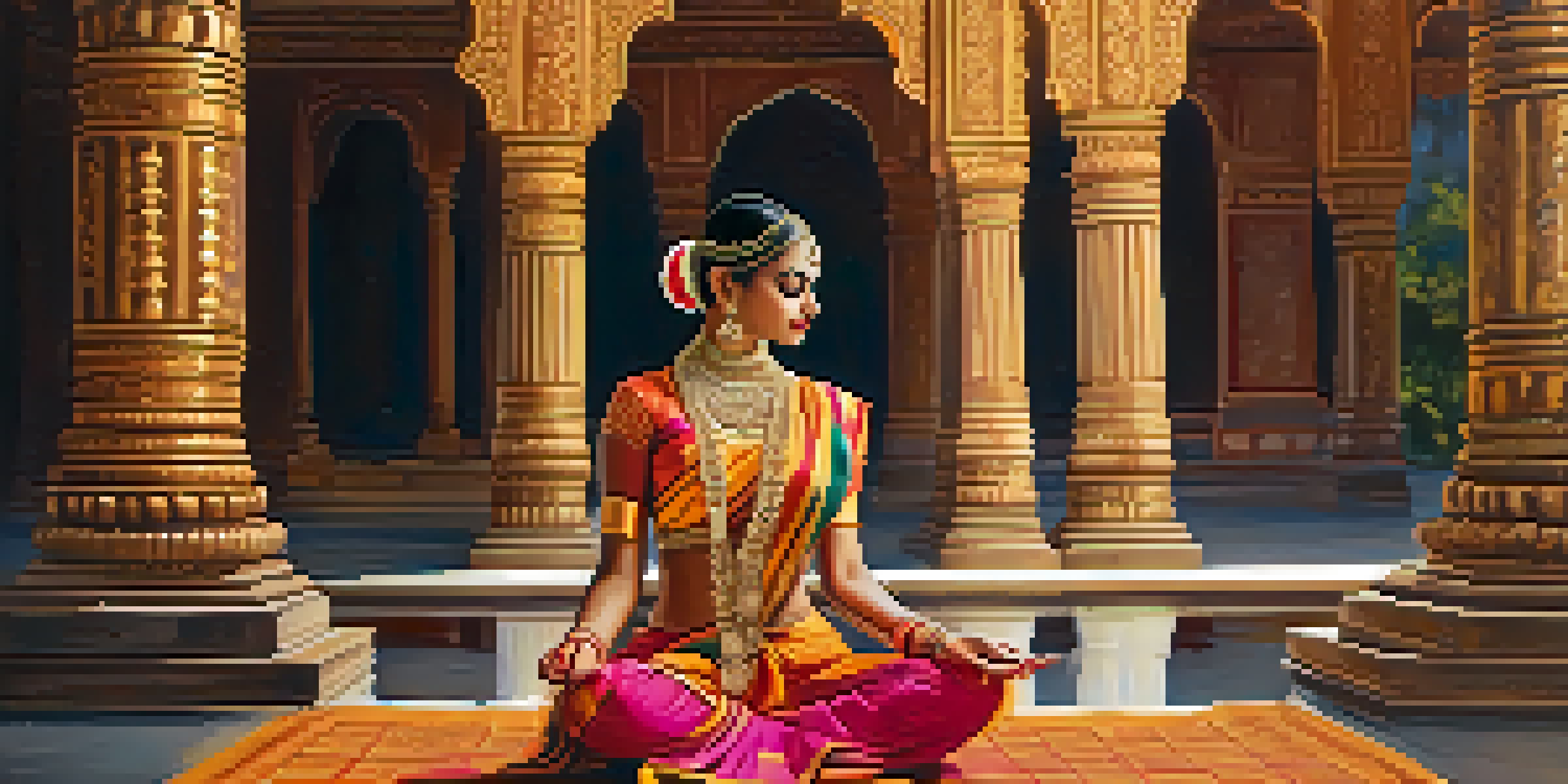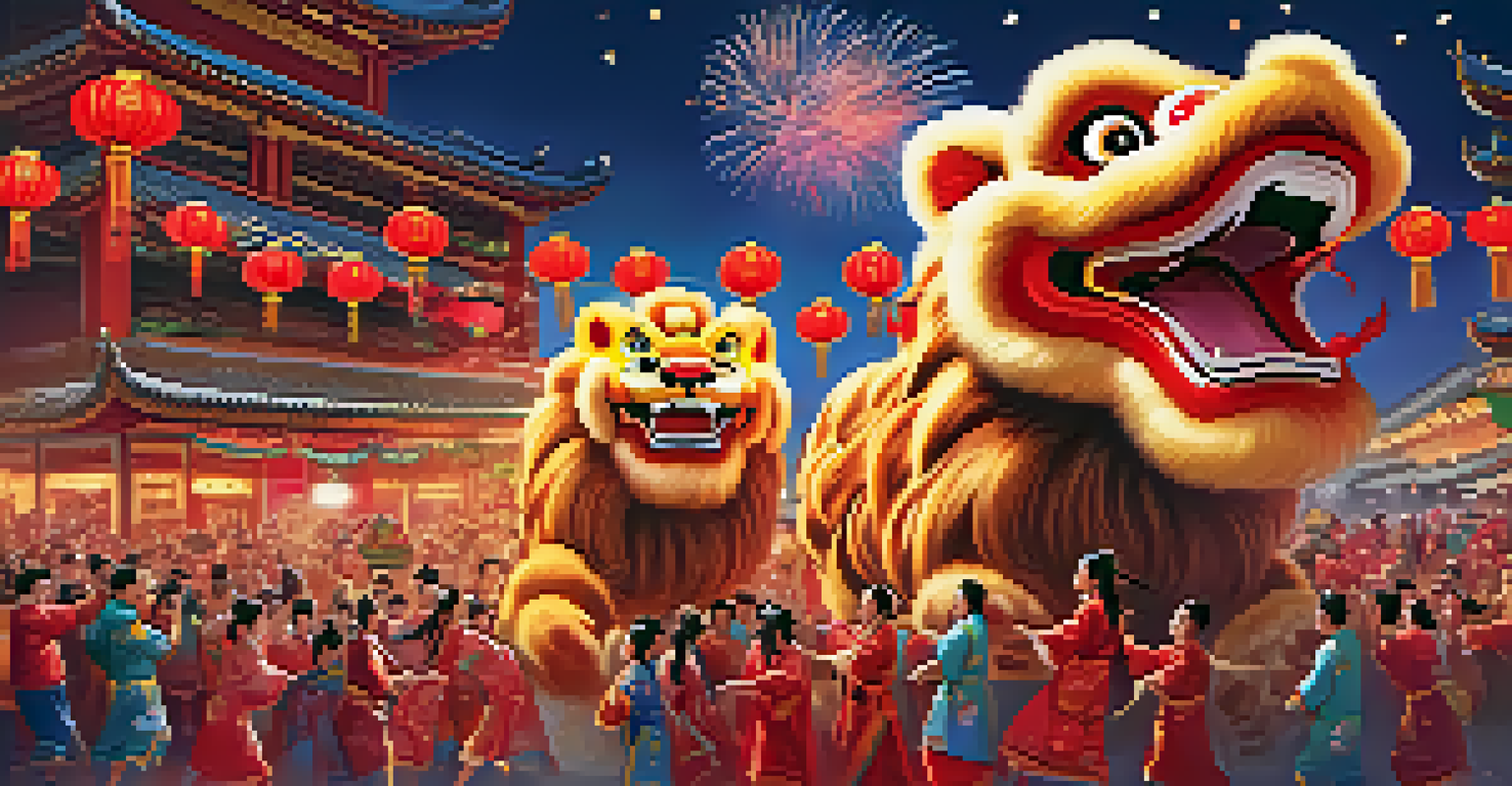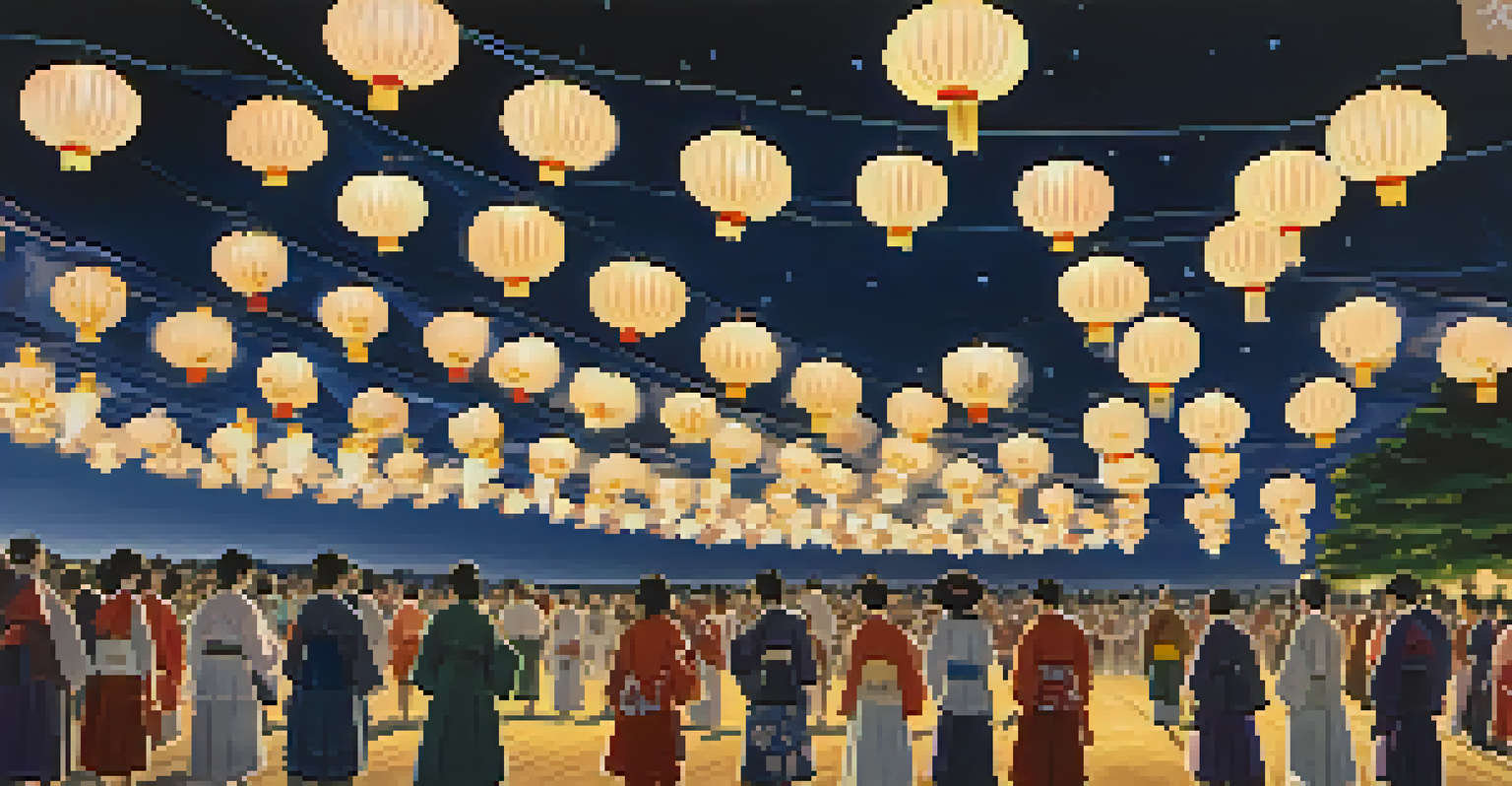Dance as a Spiritual Practice in Asian Cultural Celebrations

Understanding Dance in Asian Spirituality
In many Asian cultures, dance is more than just an art form; it's a profound spiritual practice. It serves as a medium to connect with the divine, expressing emotions and stories that words often cannot convey. Through movement, dancers tap into a deeper layer of existence, bridging the gap between the physical and spiritual realms.
Dance is the hidden language of the soul.
For instance, in Hinduism, classical dance forms like Bharatanatyam and Kathak are not just performances; they are sacred rituals that narrate mythological tales and invoke deities. Each gesture, known as 'mudra,' carries spiritual significance, transforming the dance into a devotional offering. This illustrates how dance can be a pathway to spiritual enlightenment, fostering a sense of connection with the universe.
Moreover, dance in these celebrations often reflects the cultural values and beliefs of the community. It becomes a shared experience that strengthens communal bonds while allowing individuals to express their spirituality uniquely and creatively.
Celebrating Festivals Through Dance
Asian cultural celebrations often feature dance as a central element, highlighting its importance in communal festivities. Festivals like Diwali in India, Chinese New Year, and the Thai New Year (Songkran) showcase vibrant dance performances that symbolize joy and togetherness. These dances are not just entertainment; they carry deep-rooted meanings and rituals that honor traditions.

Take the lion dance performed during Chinese New Year, for instance. This colorful spectacle is believed to bring good luck and ward off evil spirits. The energetic movements of the dancers mimic the lion's grace, creating a captivating performance that engages the audience while inviting blessings for the year ahead.
Dance as Spiritual Expression
In many Asian cultures, dance transcends art, serving as a profound spiritual practice that connects individuals to the divine.
Through these celebrations, participants experience a sense of belonging and spiritual upliftment. Dance becomes a communal language that transcends barriers, allowing everyone to partake in a shared spiritual journey while celebrating cultural heritage.
The Role of Traditional Dances in Rituals
Traditional dances often play a crucial role in religious rituals across various Asian cultures. These dances are imbued with symbolism and are performed to honor gods, ancestors, or nature. For example, the Balinese Kecak dance is performed as a form of worship and storytelling, depicting the Ramayana epic while inviting spiritual presence into the performance.
The dance is a poem of which each movement is a word.
In Japan, the Bon Odori dance is a key component of the Obon festival, which honors deceased ancestors. Participants dance in a circle around a lantern, creating a harmonious connection between the living and the spirits of those who have passed. This illustrates how dance serves as a bridge, facilitating communication and fostering a sense of reverence.
Such rituals highlight the fusion of art and spirituality, showcasing how traditional dances are not merely performances but deeply meaningful expressions of faith and respect for cultural heritage.
Dance as a Form of Meditation
In many Asian cultures, dance is also seen as a form of meditation, allowing practitioners to enter a state of mindfulness and presence. This meditative quality can be observed in practices like Tai Chi and certain forms of traditional Indian dance, where movements are slow and deliberate, promoting inner peace and balance.
Engaging in dance as a spiritual practice encourages individuals to connect with their bodies and emotions, fostering self-awareness and tranquility. Just as meditation helps clear the mind, dance facilitates a release of energy and emotions, creating a space for reflection and spiritual growth.
Cultural Festivals Embrace Dance
Asian festivals prominently feature dance, highlighting its role in communal celebrations and the expression of cultural identity.
This blending of dance and meditation highlights the holistic approach many Asian cultures take toward spirituality, emphasizing the importance of nurturing both the body and the spirit in the pursuit of enlightenment.
Modern Interpretations of Traditional Dance
As cultures evolve, so do their artistic expressions, including dance. Many contemporary Asian artists are reinterpreting traditional dance forms to address modern issues, while still retaining their spiritual essence. This fusion of old and new not only keeps traditions alive but also makes them relevant to younger generations.
For example, Bollywood dance has gained international popularity, blending classical Indian dance with modern styles. While the choreography may be flashy, many performances still hold spiritual undertones, celebrating love, joy, and connection to one's cultural roots.
These modern interpretations demonstrate that dance remains a vital spiritual practice, adapting to the times while continuing to foster a sense of community and cultural identity.
The Healing Power of Dance in Spiritual Practices
Dance has long been recognized for its therapeutic benefits, making it an essential component of spiritual practices in many Asian cultures. Movement can facilitate healing on both physical and emotional levels, allowing individuals to release stress and negative energy. In various traditions, dance is used as a tool for cleansing the spirit and rejuvenating the body.
For instance, the Sufi whirling dance is not only a form of expression but also a means of achieving spiritual ecstasy and connection with the divine. The repetitive movements induce a trance-like state that fosters deep reflection and a sense of unity with the cosmos.
Healing Through Movement
Dance is recognized for its therapeutic benefits, facilitating emotional release and spiritual rejuvenation in various traditions.
By embracing dance as a healing practice, individuals can cultivate a deeper understanding of themselves and their spiritual journey, reinforcing the idea that movement can be both a celebration and a means of personal transformation.
The Future of Dance in Asian Spiritual Celebrations
As globalization continues to influence cultures worldwide, the future of dance in Asian spiritual celebrations looks promising yet complex. The blending of traditions creates opportunities for cross-cultural exchanges, enriching the spiritual expressions found in dance. However, it also raises questions about authenticity and preservation of cultural heritage.
Young artists are increasingly exploring innovative ways to keep traditional dances relevant, often incorporating modern elements while respecting their roots. This evolution signifies a vibrant future for dance, where it can thrive as a spiritual practice while adapting to contemporary contexts.

Ultimately, the enduring power of dance in Asian cultural celebrations lies in its ability to unite people across generations, fostering a sense of shared spirituality and cultural pride in an ever-changing world.